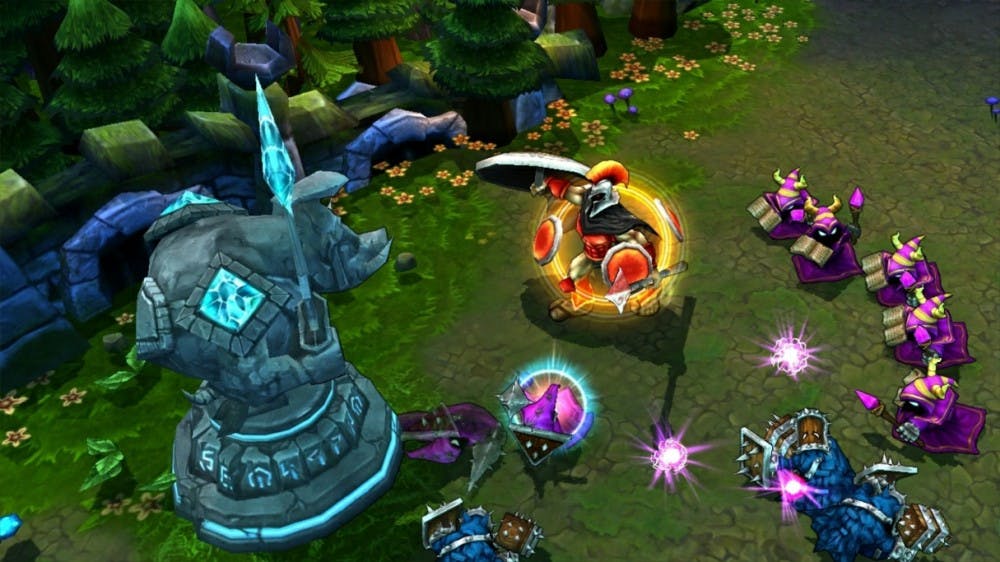GAME REVIEW: 'League of Legends' too fun to be free

Free-to-play used to be a dirty phrase to gamers.
It brought forth memories of obnoxious Facebook applications and cruddy role-playing games made in a month and a half in a Korean code sweatshop.
But “League of Legends” could be the best of a new generation of games just fun enough to make players pay for what they mostly had for free.
“LoL” is based on the popular “Defense of the Ancients,” or ”DotA,” mod for “Warcraft III.” “Based” may be too gentle of a word — its gameplay is a straight rip-off.
But “Call of Duty” isn’t that different from “Battlefield,” which isn’t that different from “Medal of Honor,” so what’s an original game, anyway?
“LoL” puts two small teams of champions in bases on opposite sides of a jungle streaked with three lanes from each fort to the other. The lanes are defended by hardy turrets and regularly respawning (but oh-so-weak) minions and are crisscrossed with entrances to a treacherous wilderness.
Players have to balance pushing against waves of enemy minions through the lanes into the opposing base, killing enemy champions for a big payoff and avoiding a similar fate.
While most multiplayer games punish death with a couple-second respawn time, dying frequently in “LoL” can quickly superpower the other team with stronger abilities and improved items. This strong element of risk and reward, wherein a successful push on a turret can change the game as much as a devastating ambush, gives “LoL” a measured and tactical feel, equally rewarding discretion and tenacity.
The gear and skills champions acquire in each game only last the length of that match, but the player’s account, or summoner, accrues experience throughout play. As it grows, it can be augmented with various enhancements that moderately stack the deck in its champions' favors.
All of these systems can be a bit intimidating to grapple with, particularly for new players who are just trying to find a champion with whom they get less severely massacred. But if they practice with other newbies against the game’s artificial intelligence and brush up on a little strategy online, they could find their luck quickly changes.
So what gets Riot Games, “LoL’s” developer and publisher, money for its electrical bills?
Impatience and vanity.
The game features a growing cadre of dozens of champions, each with unique abilities and strategies. They can each be unlocked individually or in packs with points acquired through regular play, or right away with real-world cash. The rotating selection of free-to-play characters is by and large as viable as its paid counterparts, but it's just like playing “Super Smash Bros.” with a quarter of its roster unlocked.
Torturous, to say the least.
If you love this free game as much as I do, you may find it has a way of sneaking into your bank statements.




